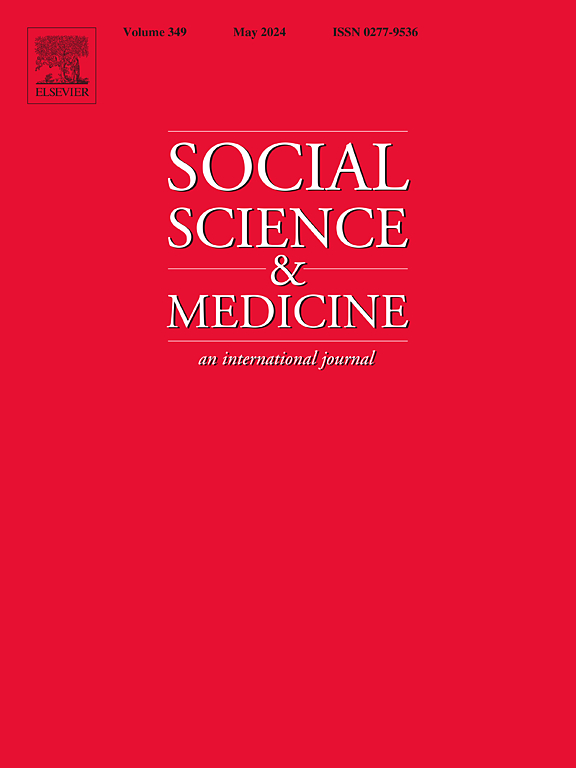缩小预期寿命差距:对统一后德国地区健康不平等缩小相关因素的生态研究。
IF 5
2区 医学
Q1 PUBLIC, ENVIRONMENTAL & OCCUPATIONAL HEALTH
引用次数: 0
摘要
在全球范围内,地区间的健康不平等正在加剧。德国统一为我们提供了一个独特的机会来探索如何减少甚至消除这种不平等:德国统一后,在不到 15 年的时间里,东西德之间长期存在的女性预期寿命差距被缩小,男性预期寿命差距也明显缩小。我们使用了 1994-2020 年期间东西德 15 个地区的国家官方统计数据。我们使用带有东德地区交互项的固定效应模型,研究了地区内关键假设因素(社会保障支出、医疗保健改善、酒精消费变化和生活满意度)的变化是否对出生时和 65 岁时的预期寿命产生了不同影响。我们的研究结果表明,德国统一后,东部地区社会保障福利的增加是降低德国两部分之间不平等的最重要因素:社会保障福利每增加 10%,东德男性出生时预期寿命比西德增加 1.05 [0.68; 1.41]个月,女性出生时预期寿命增加 0.57 [0.18; 0.97]个月。我们发现社会保障福利对 65 岁的女性也有保护作用(额外增加 0.38 [0.06; 0.70] 个月),但对男性则没有。我们的研究结果表明,增加社会保障支出可能是减少不同经济发展水平地区间健康不平等的有效政策工具。这为关于健康不平等根源的唯物主义假设和政治经济学理论提供了更多支持。本文章由计算机程序翻译,如有差异,请以英文原文为准。
Closing the life expectancy gap: An ecological study of the factors associated with smaller regional health inequalities in post-reunification Germany
Regional health inequalities are rising globally. The case of German reunification offers a unique opportunity to explore how such inequalities can be reduced, or even eliminated: following reunification, a long-standing life expectancy gap between East and West Germany was closed for women and markedly reduced for men in less than 15 years.
We used data from official national statistics covering the period 1994–2020 for 15 regions in East and West Germany. Using fixed-effects models with an interaction term for regions in the East, we investigated whether within-region changes in key hypothesised factors (social security expenditure, healthcare improvements, changes in alcohol consumption, and life satisfaction), have had differential impacts on life expectancy at birth and at 65 years.
Our results show that increases in social security benefits in the East following reunification has been the most important factor for lowering inequalities between the two parts of Germany: for every 10% increase in social security benefits, life expectancy at birth increased by an additional 1.05 [0.68; 1.41] months for males and by 0.57 [0.18; 0.97] months for females in East relative to West Germany. We find the protective effect of social security benefits also for women at 65 years (additional 0.38 [0.06; 0.70] months) but not for men.
Our findings suggest that increasing social security expenditure could be an effective policy tool for reducing health inequalities across regions with different levels of economic development. This provides additional support for the materialist hypothesis and the political economy theory of the root causes of health inequalities.
求助全文
通过发布文献求助,成功后即可免费获取论文全文。
去求助
来源期刊

Social Science & Medicine
PUBLIC, ENVIRONMENTAL & OCCUPATIONAL HEALTH-
CiteScore
9.10
自引率
5.60%
发文量
762
审稿时长
38 days
期刊介绍:
Social Science & Medicine provides an international and interdisciplinary forum for the dissemination of social science research on health. We publish original research articles (both empirical and theoretical), reviews, position papers and commentaries on health issues, to inform current research, policy and practice in all areas of common interest to social scientists, health practitioners, and policy makers. The journal publishes material relevant to any aspect of health from a wide range of social science disciplines (anthropology, economics, epidemiology, geography, policy, psychology, and sociology), and material relevant to the social sciences from any of the professions concerned with physical and mental health, health care, clinical practice, and health policy and organization. We encourage material which is of general interest to an international readership.
 求助内容:
求助内容: 应助结果提醒方式:
应助结果提醒方式:


